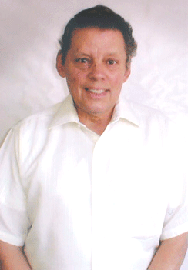


|
Home Equipment Services Software About Us | Employment Contact News |
|
3322 E Fort Lowell Rd |

About Us
History of Zonge International
Zonge International was formed as Zonge Engineering in 1972. The main focus of the company's early work was to add to the theoretical development of complex resistivity (CR) or spectral IP, which was developed by Ken Zonge under the direction of Dr. John Sumner and with financial help from AMAX. Field measurements (both surface and downhole) were made over known porphyry copper deposits. The results were then applied to reconnaissance CR surveys in an effort to discriminate between IP responses due to sulfides, clays, graphite, EM coupling, culture and other IP sources.
Unknown to both Zonge and Sumner, and the rest of the world for that matter, Kennecott was well along on a similar in-house development of CR, the results of which were summarized in Geophysics, 1973, in a paper by Van Voorhis, Nelson and Drake.
Although it was interesting and satisfying to be able to identify the difference in IP response between pyrite and copper sulfides, the immediate result of the early complex resistivity measurements was the ability to identify IP responses from alluvial clays and EM coupling. In the porphyry copper exploration boom of the early 1970's there were a lot of drill holes being put down on alluvial clay and EM coupling "IP anomalies" in the south-western United States.
Early Instrumentation
Our first CR survey instrumentation included a modified Digital Equipment Corporation PDP-8 12-bit minicomputer and a Burr-Brown 500 watt constant current transmitter. The computer, along with a Teletype terminal, tape deck, and 60 Hz M/G set were mounted in a truck and driven to the survey site.
After several years of toting this system around North America, including bush camps in Canada, the company developed the first commercially available two-channel, digitally controlled, multi-frequency IP and CR receiver. The first units were used in the field by Zonge in 1976 and were sold as a 12-bit geophysical data processor (GDP-12). Edcon also produced a digital IP receiver about this same time, under the design of Skip Snyder. Unfortunately, it never became available to the general public. The Phoenix digital spectral IP receiver, along with a number of digital time-domain receivers, became available at a later date.
The initial development of the GDP-12 was partially funded by the Cities Service minerals group under the supervision of Jack Corbett, in exchange for the first production unit. When Cities disbanded its minerals group in December 1977, their GDP-12 was sold to Cominco and was later instrumental in the discovery of their Red Dog mine in Alaska.
Electrical Geophysics
At the request of Exxon Minerals, the GDP-12 was modified and reprogrammed in 1978 to make controlled-source audio-frequency magnetotelluric (CSAMT) measurements, based on a thesis by Myron Goldstein at the University of Toronto. The first CSAMT field surveys were used to delineate Exxon's Crandon, Wisconsin, massive sulfide orebody.
Since 1978, Zonge International has expanded beyond CR and CSAMT surveys and has developed a complete line of transmitters, receivers, and peripheral equipment used for all types of electrical geophysical surveys, including time and frequency domain IP, CR, CSAMT, transient or pulse EM (TEM), frequency domain EM, natural source MT and AMT, and a very early time TEM system called NanoTEM.
Applications
Along with the main office in Tucson, Arizona, Zonge International has offices in Sparks, Nevada; Lakewood, Colorado; Minneapolis, Minnesota; and Soldotna, Alaska; . In addition to mineral exploration, the company has become involved in the application of electrical techniques for hydrocarbon, geothermal, coal and uranium exploration. Recently the company has entered into environmental and engineering studies, using the NanoTEM system and a newly developed, high density, electrical impedance tomography system, which measures both resistivity and induced polarization.
Zonge International markets equipment and Services on a world-wide basis, and is involved in a number of research projects in North America, Australia and Japan. The company has the first patents on the CR method in the USA, Canada, Mexico, and Australia.

